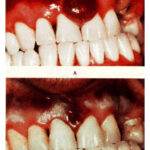Scrub typhus, also known as tsutsugamushi disease, is a potentially fatal mite-borne rickettsial infection caused by Orientia tsutsugamushi. Endemic to the “tsutsugamushi triangle” extending across Southeast Asia, Northern Australia, and the western Pacific, the disease remains a significant public health concern due to its variable presentation and diagnostic challenges. Timely recognition and appropriate antibiotic therapy are critical for reducing morbidity and mortality.

Epidemiology and Transmission of Scrub Typhus
Scrub typhus is transmitted through the bite of infected larval trombiculid mites, commonly known as chiggers. The mites are both vector and reservoir, maintaining O. tsutsugamushi transovarially across generations.
Endemic Regions
- South and Southeast Asia (India, China, Thailand, Indonesia)
- Northern Australia
- Japan, Korea
- Pacific Islands
Outbreaks frequently occur during monsoon and post-monsoon seasons, with increased risk in rural areas, forested regions, and areas with heavy vegetation.
Pathogenesis of Orientia Tsutsugamushi Infection
After a chigger bite, O. tsutsugamushi invades host endothelial cells, triggering widespread vasculitis and perivasculitis. The bacterium multiplies intracellularly, leading to:
- Microvascular leakage
- Multi-organ dysfunction
- Disseminated intravascular coagulation (DIC) in severe cases
Clinical Features of Scrub Typhus
The incubation period ranges from 6 to 21 days, after which symptoms begin acutely. Scrub typhus can mimic various infectious diseases, making early clinical suspicion crucial.
Common Symptoms
- Fever: Often high-grade, sudden onset, and persistent
- Eschar: Necrotic lesion at the chigger bite site; pathognomonic but not always present
- Lymphadenopathy
- Rash: Maculopapular, appears around the fifth day
- Headache and Myalgia
- Nausea, Vomiting, and Cough
Severe Complications
- Acute respiratory distress syndrome (ARDS)
- Hepatitis
- Meningoencephalitis
- Renal impairment
- Myocarditis and hypotension
- Multiorgan failure in untreated or late-diagnosed cases
Diagnostic Approach to Scrub Typhus
Timely diagnosis is vital to initiating effective treatment. Given overlapping symptoms with other tropical infections, a combination of clinical suspicion and laboratory tests is necessary.
Laboratory Tests
- Complete Blood Count (CBC):
- Thrombocytopenia
- Leukopenia or leukocytosis
- Liver Function Tests (LFTs):
- Elevated transaminases
- Renal Function:
- Elevated creatinine and urea in severe cases
Specific Diagnostic Tests
| Test | Description | Remarks |
|---|---|---|
| Weil-Felix Test | Detects cross-reacting antibodies (OXK strain) | Low sensitivity and specificity |
| IgM ELISA for O. tsutsugamushi | Detects specific IgM antibodies | Preferred test in resource-limited areas |
| Indirect Immunofluorescence Assay (IFA) | Gold standard test | Limited availability in endemic areas |
| PCR (Polymerase Chain Reaction) | Detects bacterial DNA in blood or eschar samples | High sensitivity; useful in early disease |
Treatment of Scrub Typhus
Antibiotic therapy significantly reduces disease severity and complications when started early.
First-Line Treatment
- Doxycycline
100 mg orally twice daily for 7–14 days
Rapid defervescence typically occurs within 48 hours of initiation.
Alternative Regimens
- Azithromycin
- Effective in children and pregnant women
- Dose: 500 mg on day one, then 250 mg daily for 4 days
- Chloramphenicol (where doxycycline contraindicated)
- Rifampicin
- Used in resistant cases or co-infection with tuberculosis
Supportive Management
- Hydration and electrolyte balance
- Antipyretics for fever
- Oxygen therapy in ARDS
- Hemodynamic support in shock
Prognosis and Mortality
With prompt antibiotic treatment, prognosis is favorable. However, untreated scrub typhus has a mortality rate of up to 30%, especially in cases complicated by organ failure.
Prognostic Indicators
- Delayed treatment initiation
- Presence of eschar and rash
- CNS involvement
- Multi-organ dysfunction syndrome (MODS)
Prevention and Public Health Strategies
Currently, no licensed vaccine exists for scrub typhus, making vector control and awareness key to prevention.
Preventive Measures
- Avoidance of chigger-infested areas (especially during peak seasons)
- Protective clothing: Long sleeves, full-length pants, boots
- Insect repellents: DEET-based products on exposed skin and clothing
- Environmental control: Clearing vegetation and rodent control in endemic zones
- Health education: For travelers, farmers, forest workers
Differential Diagnosis: Scrub Typhus vs Other Febrile Illnesses
Scrub typhus should be distinguished from other common tropical febrile illnesses due to overlapping symptoms.
| Condition | Key Differentiators |
|---|---|
| Dengue Fever | Retro-orbital pain, bleeding, positive NS1 |
| Leptospirosis | Conjunctival suffusion, renal involvement |
| Typhoid | Step-ladder fever pattern, bradycardia |
| Malaria | Periodic fever, parasite in blood smear |
| COVID-19 | Respiratory symptoms, PCR test confirmation |
Research and Emerging Trends
- Molecular Typing: Advanced genomic studies are helping track O. tsutsugamushi strains and resistance patterns.
- Vaccine Development: Ongoing research aims to overcome antigenic variation challenges.
- Novel Diagnostics: Rapid point-of-care testing is under development for remote, resource-limited settings.
Scrub typhus is a re-emerging infectious threat in many parts of Asia and the Pacific. With non-specific clinical features and potentially fatal complications, early diagnosis and treatment are essential. Heightened awareness among clinicians, investment in diagnostic infrastructure, and implementation of preventive measures remain central to effective control and management of this neglected tropical disease.

